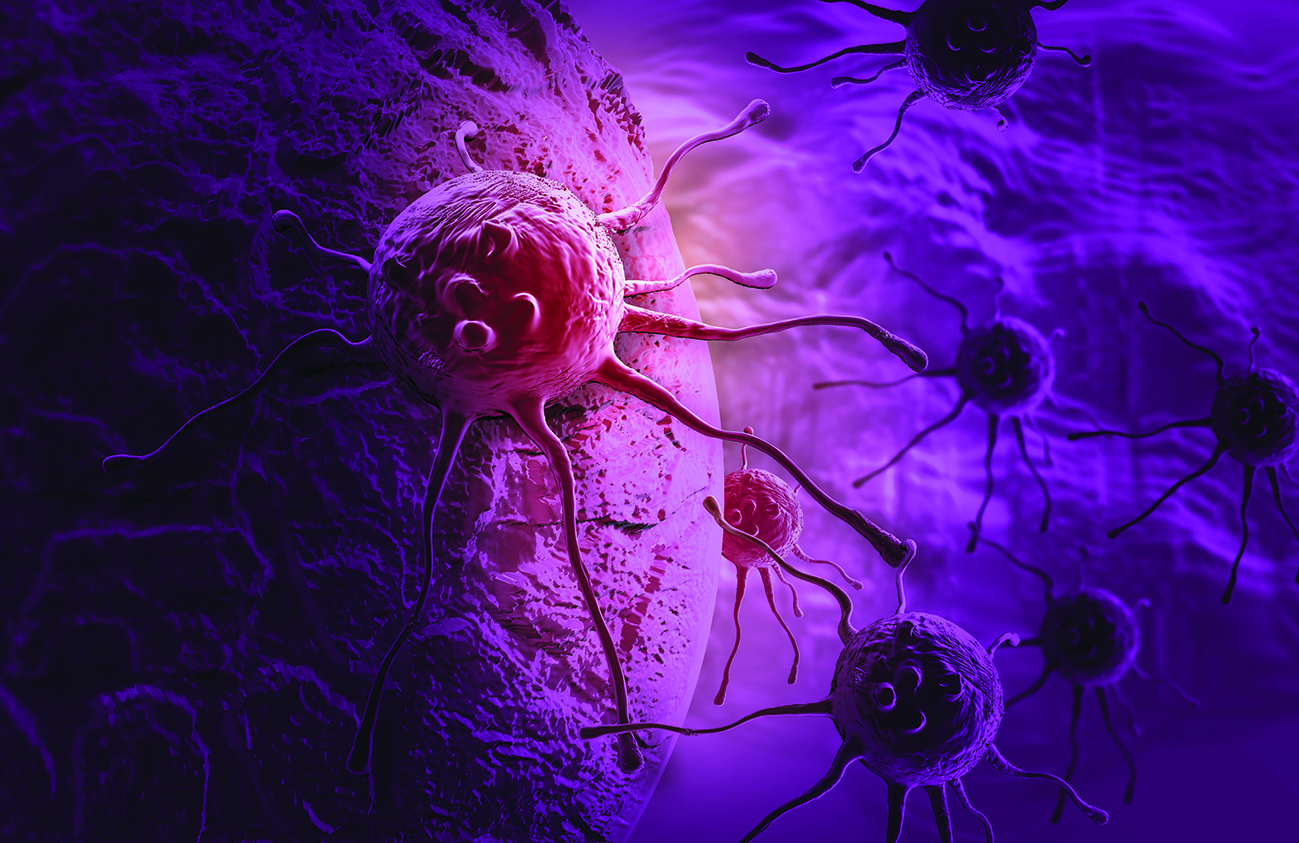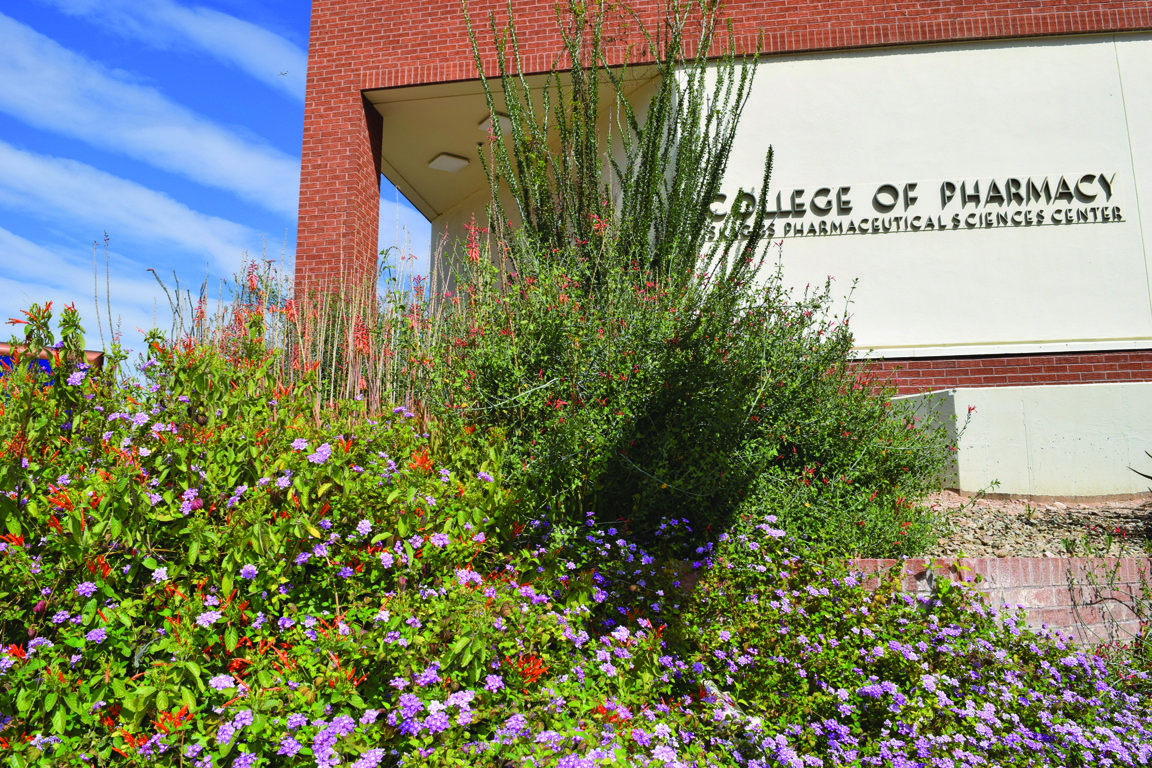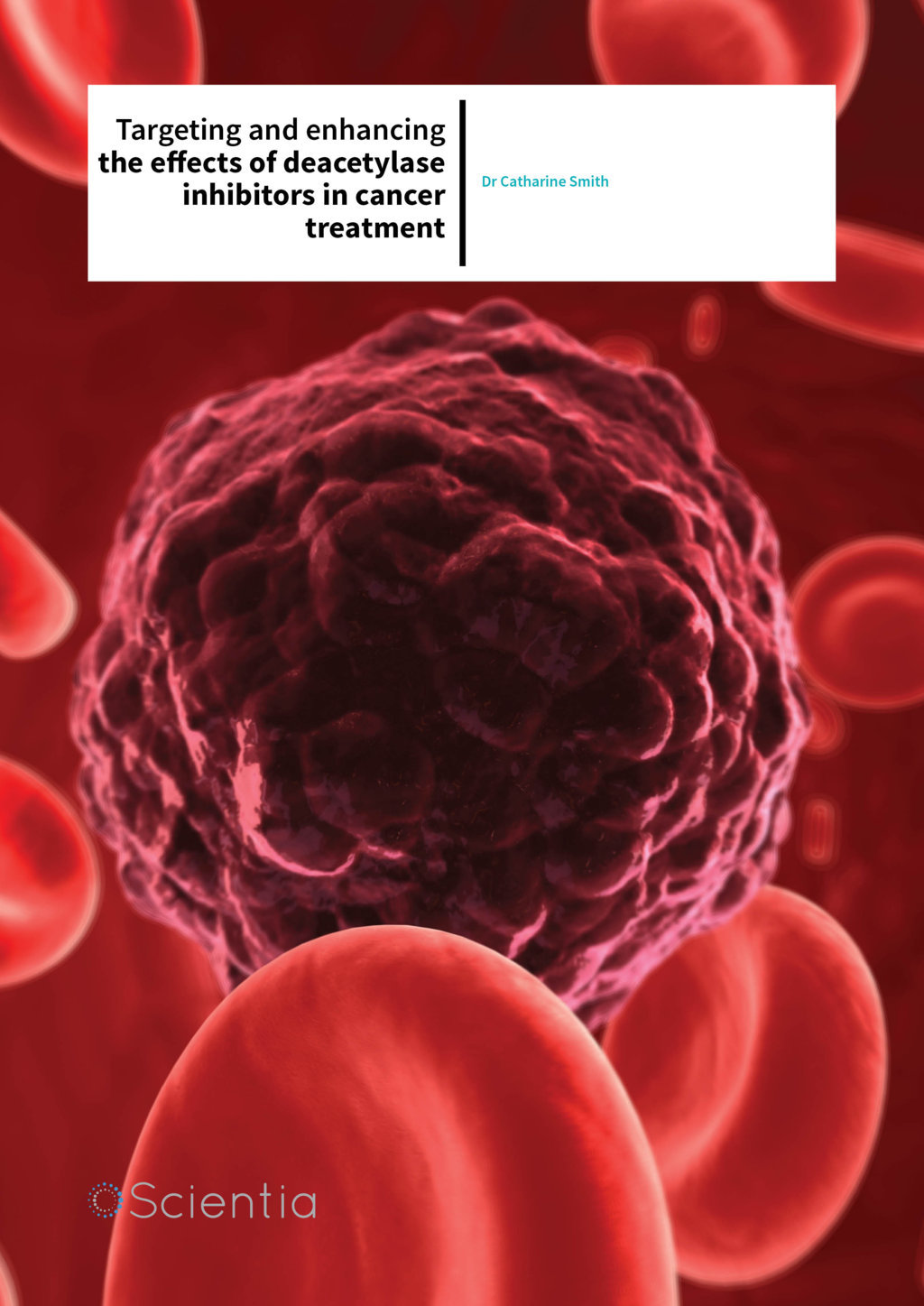Dr Catharine Smith – Targeting And Enhancing The Effects Of Deacetylase Inhibitors In Cancer Treatment
Dr Catharine Smith is an Associate Professor at the University of Arizona. Her interest in the actions of lysine deacetylases (KDACs, also known as histone deacetylases or HDACs) led her to join the University of Arizona Cancer Centre and translate her research to aid the clinical treatment of diffuse large B-cell lymphoma (DLBCL)
I’d like to start by getting an idea of your background and how you came to be interested in KDACs
My background is in epigenetic mechanisms of transcription using steroid receptors as a model system, so epigenetic regulatory proteins like KDACs are of great interest to me.
Due to the availability of small molecule inhibitors of KDACs, we were able to quickly ascertain that KDAC inhibition impaired the ability of the steroid receptor GR to activate the mouse mammary tumour virus promoter. This was contrary to expectations from the established model that KDACs oppose transcriptional activity and suggested that the role of KDACs in gene expression was more complicated than initially thought.
How is your research continuing to explore the (perhaps unexpected) roles of KDACs in transcription and other cell processes?
Models of the role of lysine acetyltransferases (KATs, also known as histone acetyltransferases or HATs) and KDACs in transcriptional regulation tend to focus on histones as their targets, however more researchers are beginning to acknowledge a role for acetylation of non-histone proteins. Many transcriptional regulatory proteins are now known to be acetylated, however in most cases the function of acetylation is unknown. In addition, several thousand proteins in multiple cellular compartments have been identified to be acetylated through proteomic studies. The localisation of these proteins and deacetylases suggests that they are likely to be involved in regulation of cellular processes other than transcription, such as metabolism. Although there are many unknowns, it is an exciting time to be in the field.
With this challenging topic, what was your motivation for translating your research to a clinical setting?
About 10 years ago I got to a point in my career at which I wanted to see my research benefit people suffering from disease within my lifetime. With several KDAC inhibitors being approved for use in humans, mostly to treat lymphoma, I saw an opportunity to contribute. I joined an interdisciplinary group of researchers at the University of Arizona Cancer Centre, who focus on finding new treatment strategies for lymphomas that have proven to be difficult to treat, including particularly aggressive forms of diffuse large B cell lymphoma (DLBCL).
How is understanding KDACs critical to the clinical use of KDACis?
Understanding the actions and cellular functions of KDACs is crucial for developing the most effective uses of their inhibitors (KDACi) in humans to treat various diseases. For example, as cancer therapeutics KDACi are not very effective unless given in combination with other therapeutics. Because we lack a comprehensive understanding of the functions of KDACs in various cell types, it is difficult to predict which therapeutics can be combined effectively with KDACi.
Our lack of knowledge also means that many side effects of KDACis are not well understood. For example, the drug Depakote is a KDACi used clinically for epilepsy for close to 40 years, however it causes unexplained metabolic and reproductive problems in about 50% of users. More research could contribute to better dosing strategies or more selective deacetylase inhibitors to alleviate or minimize some of these side effects.
How will your research in KDACs translate to clinical treatment?
We developed a cell-based model of sensitivity and resistance to KDAC inhibitors using DLBCL cell lines that share characteristics with aggressive forms of DLBCL. We are using this system to explain the variable efficacy of these drugs in the DLBCL context. The knowledge gained from our model system will allow rational selection of companion therapeutics that would sensitize aggressive DLBCL to the cytotoxic effects of deacetylase inhibitors. We have already identified one effective combination and are working to secure grant funding to evaluate it in the clinic.
How has your collaboration with the Southwest Oncology Group furthered your research into effective DLBCL therapies?
Dr Persky from the Southwest Oncology Group has conducted several clinical trials that evaluated KDAC inhibitors in DLBCL treatment, so we have a common interest in the effective use of these drugs. This collaboration has really taught me about patient issues and helped me translate my research to a clinical setting, and our teamwork led to a recently approved grant application to the Hope Foundation.
This grant will take advantage of next generation sequencing (NGS) technologies to examine the mutations and gene expression profiles of DLBCL patients treated with R-CHOP, the standard DLBCL treatment, and vorinostat, a KDACi. We will compare the markers and patterns that correlate with patient clinical outcome to those from a trial in which patients were not exposed to vorinostat. The verification of biomarkers in further studies would help clinicians to determine which DLBCL patients might respond to the inclusion of KDACis in their treatment.

cancer cell made in 3d software
UNDERSTANDING THE ROLE OF DEACETYLASES ON THE PATH TO TREATING CANCER
Enzymes that deacetylate proteins are important regulators of cell processes, and their inhibitors are used in medical treatments to sensitise and destroy specific blood cancers. Dr Catharine Smith from the University of Arizona Cancer Centre has been extending her fundamental research on deacetylases to clinical studies. This research aims to identify mechanisms of deacetylase inhibitor action and biomarkers of clinical response that have potential to increase the efficacy of these drugs and identify cancer patients that would most benefit from their inclusion in treatment.
What are HDAC/KDACs (and what do they do)?
Many of the proteins in living cells are in a constant state of flux – not only their concentrations, but also in terms of how they act and appear to other proteins. Most cellular proteins are constantly tagged and untagged with a variety of molecules, in a process called post-translational modification. These chemical tags act as signals that determine what the protein should be doing, what it should be targeting, or where it should be going. Acetylation is one such tag, about twice the size of a water molecule, which is attached and removed from lysines within proteins by acetylation and deacetylation enzymes, respectively.
Traditionally, the enzyme groups: histone acetyltransferases (HATs) and histone deacetylases (HDACs), have been established to add/remove acetyl tags from histone proteins. As histones are responsible for the packaging of DNA into chromatin, the modification of these proteins plays an important role in regulating the expression of genes. However, recently the targets of HATs and HDACs have been found to include a large number of non-histone proteins, and are now increasingly referred to as lysine acetyltransferases (KATs) and lysine deacetylases (KDACs) to reflect the broader range of their protein targets. The expansion of possible KAT and KDAC targets has led researchers to believe that these enzymes are involved in a far greater range of cellular processes than once thought, for example, having roles in metabolism and signalling.
How can they cause cancer?
Many types of cancer involve the misregulated expression of typically helpful genes, and naturally KAT and KDAC enzymes have been implicated in the formation of several cancer types. For example, several KATs have been found to be mutated and inactivated in a variety of cancers. In addition, KDACs have been shown to be present at abnormally high levels in cancer cells. Together these findings indicate the level of cellular protein acetylation becomes unbalanced in cancer. It is very likely that misregulated acetylation of select proteins, rather than all proteins, contributes to the development or progression of cancer and identifying them is a key goal of research in this field.
How HDAC/KDAC inhibitors (HDACis and KDACis) can be used to treat cancer
The association of increased KDAC levels with cancer led researchers to find direct solutions to this problem by screening for small molecule inhibitors of KDACs. Three (vorinostat, romidepsin, and belinostat) have been FDA approved for the treatment of advanced cutaneous or peripheral T Cell lymphomas (CTCL or PTCL). These KDAC/ HDAC inhibitors (or HDACis) appear to be effective against this cancer type by reducing the cancer’s growth and survival by a mechanism that is not fully explained.
Despite the effectiveness of HDACis in treating CTCL or PTCL, they are relatively rare forms of cancer, and researchers and clinicians have attempted to expand the use of HDACis to the treatment of other blood cancer types, with the hypothesis that the effects of HDACis would be useful for sensitising these cancers to combinatorial treatments.
One of the most common forms of blood cancer is diffuse large B-cell lymphoma (DLBCL). Although initial treatment of this cancer is effective, 40% of patients relapse within 5 years of diagnosis. Multiple clinical trials have been designed to determine whether combinatorial treatments that include HDACi will prevent or reverse relapse. Although some of these trials are ongoing, the results suggest that specific patient characteristics impact the efficacy of HDACis. This highlights the need for biological markers (or biomarkers) that are predictive of patient response to HDACis.

How the gaps in KDAC knowledge affect fundamental and clinical research
As described above, there are numerous gaps in the knowledge of KDACs that stem from the unknown range and involvement in regulation of many cellular processes. These holes compound the difficulty of clinical research with KDACi, where data indicates that the activity of KDACs is being blocked in patients but this does not predict whether these patients will respond with tumour regression. It is important for researchers to understand the fundamental functions of KDACs in both normal and cancer cells, as this will refine the pool of drugs and other molecules to mix with KDACis in cancer treatment, and enable the focused selection of patients sensitive to these drugs
Dr Catharine Smith’s research
Dr Catharine Smith is an expert in fundamental KDAC research, who became interested in KDACs due to their interactions with glucocorticoid receptor (GR) and their function in regulating gene expression. An early discovery saw her turning the established KDAC models on their head, by showing that KDACs increased gene expression induced by GR, rather than the more commonly held belief that KDACs act universally to reduce gene expression. She continues her fundamental research by using biochemical approaches combined with single cell microscopy to examine the effects of KDAC inhibition on downstream gene expression in extensive detail.
Translating fundamental KDAC research to the clinical side
About 10 years ago Dr Smith saw an opportunity to help people by contributing her expertise to the clinical assessment and treatment of HDACi-sensitive cancers. She joined an interdisciplinary group at the University of Arizona Cancer Centre, and integrated her research with the team’s to improve treatments for cancer types that have remained resistant to traditional approaches, such as DLBCL. Within the team, Dr Daniel Persky from the Southwest Oncology Group was also interested in the use of HDACis, and had run several HDACi trials on DLBCL patients. The alignment of Dr Daniel Persky and Dr Catharine Smith’s interests enabled them to re-focus their research by taking an integrated approach, from the fundamental cellular functions of KDACs all the way to the specific use of KDACis in clinical treatments.
The tools of Dr Smith’s lab
The collaboration with Dr Persky enabled Dr Smith to re-align her research with clinical goals in mind. To this end her lab developed cell culture models for DLBCL, with multiple cell lines exhibiting either resistance or sensitivity to HDACis. These models enable her team to define the mechanisms that make cells resistant or sensitive to HDACis and then use that knowledge to predict which other drugs might be combined with HDACi to overcome resistance. The advantage of using a lab model is that research progresses much faster than in clinical trials, and treatment solutions can be assessed quickly. For example, Dr Smith’s group found that, in resistant cell lines, HDACi affected the activity of cyclin-containing complexes, which are involved in the division and growth of cells. This finding suggests that drugs which impact the action of these complexes might be combined with HDACi to make them more efficient in killing cancer cells.
This collaboration has formed an integrated research flow, from fundamental lab-work to the treatment of patients, and cycling back again to inform the next fundamental questions
The use of patient data for genetic research
The partnership took another step forward with a successful grant from the Hope Foundation. This grant enables Dr Persky and Dr Smith to utilise next generation sequencing techniques to analyse patterns of gene expression and mutations in DLBCL patient tumours. By comparing tumours from patients treated with a traditional therapy (called R-CHOP), to those from patients treated with both R-CHOP and HDACi, the team will look for patterns of gene expression or mutations that tend to associate positively or negatively with a patient’s response to the treatments. The eventual goal is to then validate these patterns (called biomarkers) for their ability to predict the efficacy of KDACi treatment in patient groups. These biomarkers may then feed back into the fundamental research, giving clues as to the specific actions of KDACs in the complex environment of human DLBCL tumours.
The future for HDAC research and clinical therapy
The initiative of Dr Catharine Smith in joining with members of the Southwest Oncology Group and The Arizona Cancer Centre has formed an integrated research flow, from clinical trial data to fundamental lab work, and cycling back again to inform the next fundamental questions. This could translate to more effective cancer treatments in the future, including treatments tailored specifically to the patient, dependent on the specific genomic characteristics of their tumour. As the varied functions of KDACs are revealed, future research could use this as a basis for understanding acetylation in more diverse diseases.
Meet The Researcher

Dr Catharine Smith
Associate Professor
Department of Pharmacology & Toxicology
College of Pharmacy
The University of Arizona
Dr Catharine Smith received her PhD in Biochemistry from the University of Vermont, did her postdoctoral work at the National Institutes of Health, and is now an Associate Professor in the University of Arizona College of Pharmacy and a member of the University of Arizona Cancer Center and Bio5 Institute, USA. Her research focuses on epigenetic mechanisms of gene expression, and in particular their regulation through signalling pathways and modulation by anti-cancer drugs.
CONTACT
E: csmith@pharmacy.arizona.edu
T: (+1) 520 626 8349
W: http://www.pharmacy.arizona.edu/directory/catharine-smith-phd
KEY COLLABORATORS
Dr Daniel Persky, University of Arizona Cancer Center and Southwest Oncology Group
Dr Monika Schmelz, Department of Pathology, University of Arizona College of Medicine
Dr Lisa Rimsza, Mayo Clinic Scottsdale
FUNDING
University of Arizona Cancer Centre
The Hope Foundation
National Science Foundation
National Institutes of Health
REFERENCES
Dickinson, S.E., Rusche, J.J., Bec, S.L., Horn, D.J., Janda, J., Rim, S.H., Smith, C.L., and Bowden, G.T. (2015) The Effect of Sulforaphane on Histone Deacetylase Activity in Keratinocytes: Differences Between in vitro and in vivo Analyses, Mol. Carcinog., 54, 1513–1520.
Kadiyala,V., Patrick, N.M., Mathieu, W., Jaime-Frias, R., Pookhao, N., An, L., and Smith, C.L. (2013) Class I Lysine Deacetylases Facilitate Glucocorticoid-Induced Transcription, J. Biol. Chem., 288, 28900–28912.
Tula-Sanchez, A, Havas, A.P., Alonge, P, Klein, M.E., Doctor, S.R, Pinkston, W., Glinsmann-Gibson, B.J., Rimsza. L.M., and Smith, C.L. (2013) A Model of Sensitivity and Resistance to Histone Deacetylase Inhibitors in Diffuse Large B Cell Lymphoma: Role of Cyclin-dependent Kinase Inhibitors, Cancer Biol. Therapy, 14, 949–961.
Lee, S.C., Magklara, A., and Smith, C.L. (2011) HDAC Activity is Required for Efficient Core Promoter Function at the Mouse Mammary Tumor Virus Promoter, J. Biomed. Biotechnol., 2011, 416905.
Mullholland, N.M., Soeth, E. and Smith, C.L. (2003) Inhibition of MMTV Transcription by HDAC Inhibitors Occurs Independently of Changes in Chromatin Remodeling and Increased Histone Acetylation. Oncogene, 22, 4807–4818.



